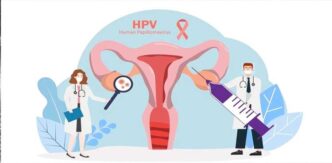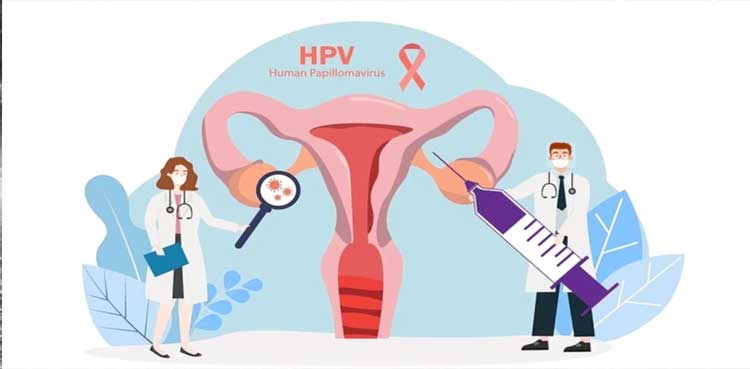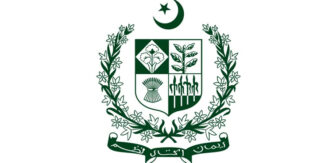Certainly! Here is a comprehensive report on Pakistan’s receipt of the full supply of cervical cancer vaccine, based on the latest available information.
💉 Pakistan Receives Full Supply of Cervical Cancer Vaccine: Historic HPV Vaccination Drive Launch
🔍 1. Overview of Vaccine Acquisition and Campaign Launch
Pakistan has successfully received the complete supply of human papillomavirus (HPV) vaccines required for its first-ever national cervical cancer vaccination campaign. This historic public health initiative, scheduled to run from September 15 to 27, 2025, represents a monumental step in protecting the country’s female population from cervical cancer, which is the third most common cancer among women in Pakistan and the second most common among women of reproductive age (15-44 years) . The campaign will initially target 13 million girls aged 9-14 years across Punjab, Sindh, Islamabad Capital Territory, and Azad Jammu & Kashmir, with plans to expand to other regions in subsequent years .
📊 2. Campaign Implementation Framework
2.1 Target Population and Coverage
The vaccination drive aims to achieve comprehensive coverage through a multi-faceted approach:
| Implementation Aspect | Details | Citation |
|---|---|---|
| Target Regions | Punjab, Sindh, Islamabad Capital Territory, Azad Jammu & Kashmir | |
| Target Age Group | Girls aged 9-14 years | |
| Total Target Population | 13 million girls | |
| Sindh-specific Target | 4.1 million girls | |
| Vaccination Schedule | Single-dose regimen | |
| Campaign Duration | September 15-27, 2025 |
2.2 Delivery Strategies
The campaign will employ multiple delivery mechanisms to ensure maximum coverage:
School-based vaccination: Schools will serve as primary vaccination sites, with strong support from education departments
Community outreach: Mobile teams will vaccinate out-of-school girls at community locations like markets, parks, and vocational centers
Fixed-site services: Existing EPI centers will provide vaccination services
Catch-up drives: Additional efforts will target girls who miss the initial campaign
🤝 3. International Partnerships and Support
The successful acquisition of vaccines and campaign implementation has been made possible through substantial international support:
Gavi, The Vaccine Alliance: Providing funding support and ensuring vaccine availability free of charge
World Health Organization (WHO): Training 49,000 health workers and providing technical guidance for campaign conceptualization, planning, data analysis, and capacity development
DOPASI Foundation: Partnering with the Federal Directorate of Immunization (FDI) to mobilize support and build public confidence
🏛️ 4. Government Leadership and Institutional Framework
The campaign is being implemented under the leadership of Pakistan’s Federal Directorate of Immunization (FDI) and the Expanded Programme on Immunization (EPI) at both federal and provincial levels . The Sindh government has taken a pioneering role in launching the initiative, with Health Minister Dr. Azra Pechuho providing directives for the province’s implementation . The campaign represents one of the most significant expansions of Pakistan’s immunization program in recent years, moving beyond traditional childhood vaccines to address adolescent health needs .
⚕️ 5. Health Context and Urgency
5.1 Cervical Cancer Burden in Pakistan
The vaccination drive addresses a critical public health challenge:
Annual new cases: 5,008 women diagnosed with cervical cancer each year
Annual deaths: 3,197 women die from the disease annually
Mortality rate: 64% (one of the highest in South Asia)
Primary causes: Delayed diagnoses and limited access to screening programs
A recent WHO study conducted across 18 healthcare facilities in Pakistan (2021-2023) documented 1,580 cases of cervical cancer, suggesting significant underestimation of the disease burden due to low screening rates and lack of a national cervical cancer registry . Modelling data indicate that without vaccination, Pakistan’s cervical cancer burden will increase at least three-fold over the next seven decades .
5.2 Vaccine Efficacy and Protection
The HPV vaccine offers highly effective protection against the virus strains responsible for most cervical cancers:
HPV 16 and 18: These high-risk types cause 70-80% of all cervical cancer cases
Single-dose efficacy: The WHO now endorses a single-dose schedule, which simplifies delivery and increases uptake likelihood
Lifelong protection: A single dose provides lifelong protection against HPV-related cancers
👥 6. Implementation Workforce and Training
To ensure successful campaign execution, massive training initiatives have been undertaken:
49,000 health workers trained through cascade training sessions until the end of August
3,611 vaccinators deployed in Sindh alone, each working in four-member teams with assistants and social mobilizers
Supervisory structure: Includes 1,190 first-level supervisors (mostly doctors trained to handle adverse events) and 393 second-level supervisors
Monitoring system: The Sindh Electronic Immunisation Record (SEIR) system with an HPV-specific module will track coverage
🚧 7. Challenges and Mitigation Strategies
Despite the comprehensive preparations, several challenges remain:
7.1 Reaching Vulnerable Populations
Out-of-school girls: Represent approximately 50% of the target population in some regions
Geographic barriers: Remote and hard-to-reach areas require mobile teams and special efforts
Prioritized districts: Kashmore, Qambar-Shahdadkot, Shikarpur, Larkana, Umerkot, Tando Muhammad Khan, and Badin are receiving intensified mobilization efforts due to higher proportions of out-of-school girls
7.2 Addressing Vaccine Hesitancy
Myths and misconceptions: Concerns about infertility and other false beliefs require proactive addressing
Cultural and religious considerations: These need sensitive handling through appropriate messaging
Trust-building: Healthcare workers need to build trust and explain the disease and vaccine benefits clearly
📅 8. Future Expansion Plans
The current campaign represents only the first phase of a comprehensive national expansion:
2025: Punjab, Sindh, Islamabad Capital Territory, and Azad Jammu & Kashmir
2026: Khyber Pakhtunkhwa
2027: Balochistan and Gilgit-Baltistan
Routine immunization: The HPV vaccine will become a permanent part of Pakistan’s routine immunization program starting January 2026 for 9-year-old girls
💡 9. Significance and Historical Context
This campaign marks several important milestones:
First anti-cancer vaccine introduced in Pakistan’s national immunization program
Largest vaccination campaign targeting adolescent girls in the country’s history
Pakistan joins 149 countries that have already introduced HPV vaccination
Alignment with WHO strategy: Supports the World Health Assembly’s Global Strategy to eliminate cervical cancer by 2030 (90% vaccination target)
🏁 10. Conclusion
Pakistan’s receipt of the full cervical cancer vaccine supply and the impending launch of its historic HPV vaccination campaign represents a transformative moment for public health in the country. By targeting 13 million girls aged 9-14 with a single-dose vaccine that provides lifelong protection against cervical cancer, Pakistan is taking a monumental step toward eliminating a disease that claims over 3,000 women’s lives annually. The successful implementation of this campaign—made possible through international partnerships, government leadership, and extensive health worker training—has the potential to dramatically reduce cervical cancer incidence and mortality in future generations. While challenges remain in reaching vulnerable populations and addressing vaccine hesitancy, the comprehensive preparation and phased expansion approach provide strong foundations for success. This initiative not only addresses an urgent health need but also demonstrates Pakistan’s commitment to achieving the WHO’s cervical cancer elimination targets and improving women’s health outcomes nationwide







